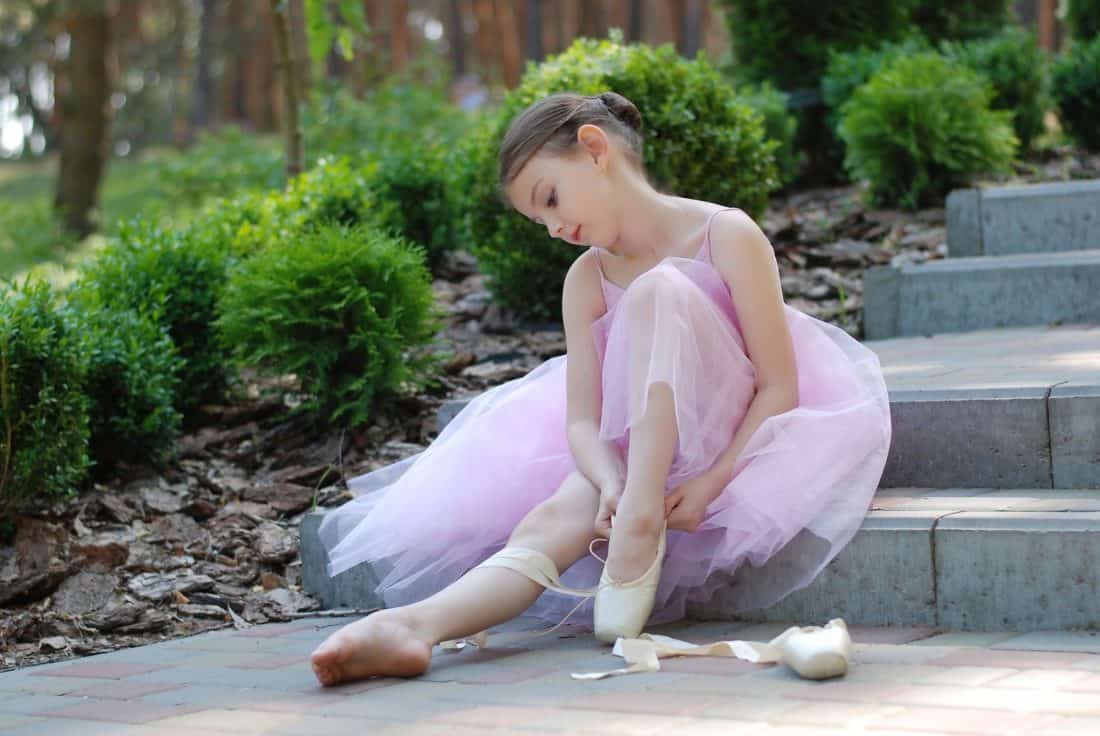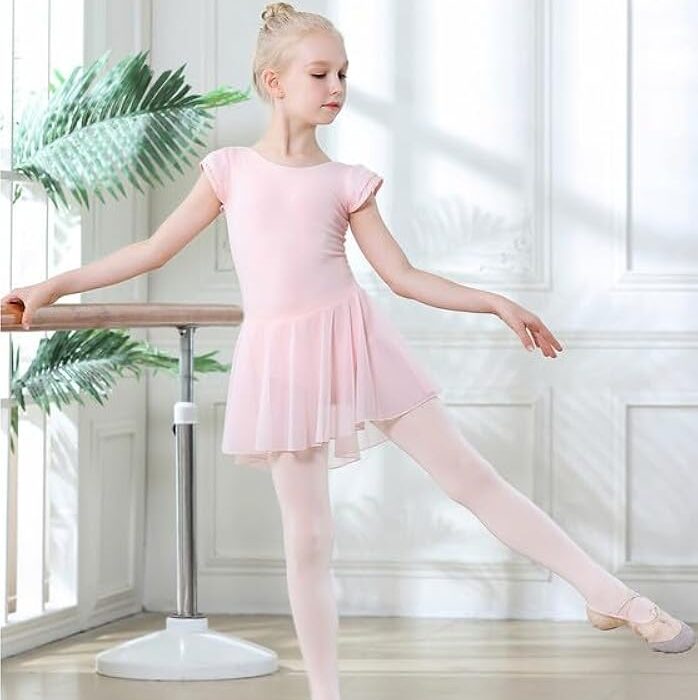Finding the right ballet outfits for your little ballerina is important. The right outfit can boost her confidence and make her feel special in class.
Ballet is more than just dance; it’s an art form. For young girls, wearing the right outfit can make all the difference. From leotards to tutus, each piece plays a role in her performance and comfort. Choosing the right size, color, and style can be overwhelming.
Parents want their little dancers to feel confident and graceful. This guide will help you navigate the world of ballet outfits. You will discover essential tips for selecting the best clothing for your child. Get ready to help your little one shine in her ballet class with outfits that fit perfectly and look beautiful.
Table of Contents
The Enchantment Of Ballet Attire
Ballet attire captures the magic of dance. It transforms young girls into graceful ballerinas. The outfits inspire confidence and creativity. Each piece tells a story of elegance and dedication.
Choosing the right ballet outfit is essential. It enhances movement and comfort. The right attire helps young dancers shine on stage. It also reflects their personality and passion for dance.
The Role Of Outfits In Ballet
Outfits play a vital role in ballet. They support the dancer’s body during movement. Proper attire allows for flexibility and ease. Every dancer needs to feel comfortable while performing.
The right outfit helps teachers see body alignment. This aids in teaching and correcting techniques. A well-fitted leotard or tutu shows the dancer’s form. It highlights their hard work and training.
Why Aesthetics Matter For Young Dancers
Aesthetics are important in ballet. Beautiful outfits create a visual impact. They draw the audience’s attention. A stunning costume can make a performance unforgettable.
Younger dancers find joy in colorful and stylish attire. Bright colors and fun designs motivate them. A lovely outfit makes practice more exciting. It encourages them to express themselves through dance.
Essential Ballet Outfit Components
Choosing the right ballet outfit is essential for your little dancer. Each piece plays a vital role in comfort and performance. Understanding the key components helps you make informed choices.
Leotards: The Ballet Staple
Leotards are the foundation of any ballet outfit. They provide support and flexibility. Choose a leotard that fits snugly without being too tight.
Look for breathable materials. Cotton blends are popular choices. They allow for easy movement and keep dancers cool.
Colors and styles vary widely. Classic black is timeless, but bright colors add fun. Choose what your child feels comfortable in.
Tutus And Skirts: Twirling Essentials
Tutus and skirts add flair to ballet outfits. They enhance the beauty of every twirl. A tutu can be fluffy or sleek, depending on the style.
Short skirts are great for younger dancers. They allow for freedom of movement. Longer skirts create a graceful look.
Consider the fabric. Tulle is common for tutus, while soft materials work for skirts. Choose what your child enjoys wearing.
Choosing The Right Leotard
Finding the perfect leotard for your little ballerina is essential. The right fit and material can make her dance experience much better. Leotards come in many styles and fabrics. Knowing what to look for helps you choose the best one.
Material Considerations
Leotards are made from different materials. Common options include cotton, lycra, and spandex. Cotton is soft and breathable. It is great for younger dancers. Lycra and spandex offer more stretch. They allow for better movement.
Check the quality of the fabric. A good leotard should be durable and easy to wash. Look for materials that hold their shape. This helps the leotard last longer through many dance classes.
Styles And Fits For Young Dancers
Leotards come in various styles. Some have short sleeves, while others are sleeveless. Choose a style that your child feels comfortable in. Consider her personal taste too. Bright colors and fun patterns can make her excited to wear it.
Fit is also important. The leotard should hug her body without being too tight. It should allow for freedom of movement. Check the size chart before buying. Different brands may have different sizing.
Tutus 101
Tutus are the heart of ballet outfits. They add beauty and grace. Choosing the right tutu can be tricky. Many styles and sizes exist. Let’s explore the different types of tutus and how to pick the right one.
Classic Vs. Romantic Tutus
Classic tutus are known for their stiff design. They create a bell shape. Dancers wear them for performances. They provide a striking look on stage.
Romantic tutus are softer and longer. They flow gently with movement. These tutus often reach the calf. They give a softer, dreamy appearance. Each style has its own charm. Consider the performance style before choosing.
Selecting The Perfect Tutu Size
Size matters for comfort and movement. Measure your child’s waist for the best fit. Tutus usually come in small, medium, and large. Check the size chart before buying.
Look for adjustable waistbands. This feature allows for growth. A tutu should not be too tight or too loose. Your little ballerina needs to move freely. Comfort is key for her enjoyment.
The Importance Of Tights
Tights are essential for every little ballerina. They provide warmth and support during practice. Good tights help dancers move freely. They also enhance the overall ballet outfit. Choosing the right tights can make a big difference.
Comfort is key. Tights should fit well and feel soft against the skin. This ensures your child can focus on dance, not discomfort. The right tights also protect legs from injury. They can prevent scratches and minor scrapes.
Types Of Ballet Tights
Several types of ballet tights are available. The most common are footed, footless, and convertible tights. Footed tights cover the entire leg. They are great for warmth and coverage. Footless tights allow for more flexibility. They are ideal for warmer studios.
Convertible tights offer the best of both worlds. They can be worn footed or footless. This makes them versatile for different dance styles. Each type has its benefits, depending on your child’s needs.
Color And Texture Choices
Color is an important factor in choosing ballet tights. Classic colors include pink, black, and white. These shades match most ballet outfits. Some studios have specific color requirements. Always check with the instructor.
Texture also matters. Tights come in various materials. Common choices include nylon and spandex. These materials provide stretch and durability. Soft textures feel good and allow easy movement. Think about what your child prefers.

Credit: stelleworld.com
Proper Ballet Shoes For Little Feet
Choosing the right ballet shoes for your little ballerina is essential. The right shoes help in learning and performing ballet. They provide comfort and support. Here are key points to consider.
The Fit Of Ballet Slippers
The fit of ballet slippers is very important. Shoes that are too tight can hurt little feet. Shoes that are too loose can cause falls. Here are some tips for finding the right fit:
- Measure the foot length and width.
- Try on slippers with tights.
- Check for a snug fit, not tight.
- Ensure toes can move but do not curl.
- Walk in them to check comfort.
Leather Vs. Canvas: A Comparison
Choosing between leather and canvas ballet shoes can be confusing. Each type has its own benefits. Here’s a comparison to help you decide:
| Feature | Leather | Canvas |
|---|---|---|
| Durability | More durable and long-lasting | Less durable, may wear out faster |
| Flexibility | Less flexible | More flexible and breathable |
| Fit | Conforms to the foot over time | Retains shape, easy to clean |
| Price | Generally more expensive | Usually more affordable |
Consider your child’s needs. Think about comfort, price, and how long the shoes will last. This will help you choose the best ballet shoes.
Warm-up Gear For Young Ballerinas
Warm-up gear is essential for young ballerinas. It helps them stay warm and comfortable before class. Proper clothing can prevent injuries and improve performance. Let’s explore two key items: cardigans and legwarmers.
Cardigans And Legwarmers
Cardigans and legwarmers are popular choices for warm-up gear. They provide extra warmth during practice. Here are some benefits:
- Comfort: Soft fabrics keep young dancers cozy.
- Flexibility: Items allow for easy movement.
- Style: Available in many colors and designs.
When selecting cardigans, consider these tips:
- Choose lightweight materials for breathability.
- Look for styles that fit well without being tight.
- Pick colors that match ballet attire.
Legwarmers can be worn on the legs or over tights. They come in various lengths. Short legwarmers are great for warmer days. Long ones are perfect for colder weather. Make sure they are stretchy. This helps maintain mobility during practice.
When To Wear Warm-up Clothing
Understanding when to wear warm-up clothing is important. Use these guidelines:
| Activity | Recommended Gear |
|---|---|
| Before Class | Cardigans and legwarmers |
| During Class | Remove warm-ups as body heat increases |
| After Class | Put warm-ups back on to retain warmth |
Warm-up gear is essential for all ballet activities. It helps maintain body heat. Young ballerinas should wear it before and after class. Remove items during class to allow for freedom of movement.
Hair And Headpieces
Choosing the right hair and headpieces is essential for your little ballerina. The hairstyle should be neat and secure. Headpieces can add charm and character. Let’s explore how to create the perfect ballet look.
Securing The Ballet Bun
A ballet bun is the classic hairstyle for dancers. It keeps hair out of the face. Here’s how to create a secure ballet bun:
- Start with clean, dry hair.
- Brush hair back into a smooth ponytail.
- Use a hair tie to secure the ponytail tightly.
- Twist the ponytail around the base to form a bun.
- Pin the bun with bobby pins.
- Use hairspray for extra hold.
Make sure the bun is tight. It should not move during practice or performance. Consider using a hairnet for a polished look. A hairnet can keep flyaways in place.
Adorable Headpiece Options
Headpieces can enhance the ballet outfit. They can add a special touch. Here are some cute options:
| Headpiece Type | Description |
|---|---|
| Flowers | Fresh or artificial flowers add beauty. |
| Tiara | A sparkly tiara gives a princess feel. |
| Hair Clips | Small clips can hold hair and look cute. |
| Headband | A simple headband can keep hair tidy. |
Choose headpieces that match the outfit. Avoid heavy accessories. They can be distracting during a dance.
Focus on comfort and style. Your little ballerina will shine on stage.
Accessorizing The Ballet Outfit
Choosing the right accessories can enhance your little ballerina’s look. Accessories add charm and personality. They make the outfit feel complete. Here are some tips for picking the best accessories.
Jewelry And Ballet: What Works?
Jewelry for ballet should be simple and elegant. Avoid large pieces that might distract. Small earrings or a delicate necklace can be lovely. Choose items that sparkle but don’t get in the way.
Remember, comfort is key. Your child should feel free to move. The focus should be on dancing, not adjusting jewelry. Stick to items made from safe materials. Hypoallergenic options are best for sensitive skin.
Adding Character With Accessories
Accessories can showcase your child’s personality. Hairpieces like ribbons or flowers add a special touch. Colorful headbands can be fun and stylish.
Consider a themed bag for ballet shoes. It can be a fun way to express interests. Tights and legwarmers in bright colors or patterns can stand out. They can reflect your child’s favorite colors.
Incorporate fun elements, like character-themed items. Princesses or fairies can inspire creativity. Accessories should bring joy, not frustration. Keep it light and playful.

Credit: sanelijodance.com
Dress Code For Ballet Classes
The dress code for ballet classes is essential. It helps create a focused environment. A proper outfit also allows instructors to see body movements clearly. This guide explains the dress code, focusing on two key areas.
Understanding School Requirements
Every ballet school has its own dress code. Some schools require specific colors or styles. Check the school’s guidelines before buying outfits. Here are common requirements:
- Usually in solid colors.
- tights: Often pink or black.
- shoes: Ballet slippers in the correct color.
- skirts: Optional for some classes.
Make sure your little ballerina feels comfortable. Choose outfits that fit well and allow movement. Ask the school for any additional rules.
Uniformity And Its Benefits
Uniformity in ballet outfits offers several benefits. It fosters a sense of belonging. It helps students feel part of a group. Here are some benefits of following the dress code:
- Focus: Students concentrate on dancing, not outfits.
- Discipline: Learning to follow rules starts early.
- Equality: Everyone wears the same outfit, reducing competition.
- Comfort: Proper attire allows for full movement.
Dress codes can boost confidence too. A well-fitted outfit makes a student feel prepared. Understanding and following these guidelines is key for every little ballerina.
Performance Attire Vs. Practice Wear
Choosing between performance attire and practice wear is important for your little ballerina. Each type of clothing serves a different purpose. Understanding these differences helps you make informed choices. Let’s explore the key aspects of both categories.
Differences In Design
Performance attire is often colorful and eye-catching. It includes costumes for recitals and shows. These outfits are designed to impress an audience. They may have intricate designs, sequins, and unique fabrics.
Practice wear, on the other hand, is more functional. It focuses on comfort and ease of movement. Typical practice wear includes leotards, tights, and soft shoes. These clothes allow dancers to move freely during lessons.
Building A Performance Wardrobe
Start by selecting a few essential pieces. A classic tutu is a must-have for performances. Choose a leotard that matches the costume style. Consider adding skirts or accessories to enhance the look.
Don’t forget about the right shoes. Pointe shoes or ballet slippers are key for a polished performance. Each dancer’s needs may differ based on their level. Make sure to fit each piece properly for comfort and style.
Caring For Ballet Outfits
Caring for ballet outfits is key to keeping them in great shape. Proper care helps your little ballerina look her best. It also extends the life of the costumes. Follow these tips for cleaning and storing ballet outfits.
Cleaning And Maintenance Tips
Keeping ballet outfits clean is important for both hygiene and appearance. Here are some simple cleaning tips:
- Read care labels. Always check the care instructions first.
- Hand wash. Use cold water and mild detergent for delicate fabrics.
- Avoid bleach. Bleach can damage the fabric and colors.
- Air dry. Lay costumes flat or hang them to dry. Avoid the dryer.
- Spot clean. For small stains, use a damp cloth immediately.
Regular maintenance keeps outfits looking fresh and new. Inspect for loose threads or tears. Repair them right away to prevent further damage.
Storing Ballet Costumes Properly
Proper storage keeps ballet costumes safe and intact. Consider these storage tips:
- Use garment bags. Protect costumes from dust and dirt.
- Avoid hanging on hangers. This can stretch the fabric.
- Choose a cool, dry place. Avoid direct sunlight and humidity.
- Store away from pets. Keep costumes safe from pet hair and scratches.
Use a dedicated storage box for accessories. This keeps everything organized. Label the box for easy access. Regularly check stored items to ensure they are in good condition.
Where To Buy Ballet Outfits
Finding the perfect ballet outfit for your little dancer is important. The right outfit boosts confidence and ensures comfort during practice. Many options exist for shopping. Here are some great places to consider.
Local Dancewear Shops
Local dancewear shops offer a personal touch. You can see and feel the fabric. Staff members often have dance experience. They can help you find the right size and style.
These shops usually carry a range of items. From leotards to tutus, they have it all. You might even find accessories like tights and shoes. Shopping locally supports your community too.
Online Stores And Custom Orders
Online stores provide convenience and variety. You can browse many styles from home. Websites often have detailed size charts. This helps ensure a good fit for your ballerina.
Custom orders are another option. Some brands allow you to design unique outfits. This is perfect for special performances. It adds a personal touch to your child’s dance experience.
Always check return policies before buying online. This way, you can exchange items if needed. Online shopping can be a fun experience. It opens a world of choices for your little dancer.

Credit: www.amazon.com
Frequently Asked Questions
What Should I Consider When Buying Ballet Outfits?
Look for comfort, fit, and fabric. Choose breathable materials for easy movement.
How Do I Choose The Right Size For My Child?
Measure your child’s height and weight. Refer to size charts for guidance.
What Styles Of Ballet Outfits Are Popular?
Leotards, tutus, and ballet skirts are popular. Each offers a unique look.
Are There Specific Colors For Ballet Outfits?
Classic colors like pink, black, and white are common. Bright colors are also fun!
How Do I Care For Ballet Outfits?
Wash in cold water and hang to dry. Avoid harsh detergents to keep them nice.
Conclusion
Choosing the right ballet outfit is essential for your little ballerina. Comfort and fit help her dance freely. Consider materials that allow movement and breathability. Don’t forget to think about styles that reflect her personality. Always check sizing charts before buying.
A good outfit boosts her confidence and joy in dance. With the right guidance, you can find the perfect pieces. Enjoy this special journey in ballet together. Happy shopping for your little star!







